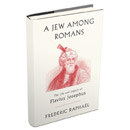Changing partners as quickly as bed sheets, a film character finally discovers true love, proclaiming, “This is the real thing.” Cinema feeds (on) such fantasy, explaining the reception given two recent films, one generally overlooked, the other highly acclaimed.
The latter, Silver Linings Playbook, focuses on Pat, released from a mental health facility after injuring his wife’s lover, and Tiffany, battling a sex addiction in response to the death of her husband. They meet, annoy each other, and fall in love while rehearsing for a dance competition. Charmingly, the film subverts the cliché whereby protagonists overcome all odds to win the contest.
The cliché, instead, appears in the subplot. Having gambled away his savings, Pat’s obsessive-compulsive father makes a deal: if the Philadelphia Eagles win their game at the same time that Pat and Tiffany achieve at least a middling score, he will reap a financial harvest. The bet works out, the film closing with family and friends joyously preparing a meal while Pat and Tiffany kanoodle in a corner, clearly having found “the real thing.”
One can’t help wondering, however, about other real things: Tiffany’s sex addiction, Pat’s bipolar disorder, his father’s OCD, the family’s habit of yelling vulgarities at each other. Ignoring such issues, most viewers want to believe that the silver linings of romantic love can swallow up dark clouds of dysfunctional behavior.
Released almost simultaneously in the U.S. with Silver Linings Playbook, Anna Karenina calls into question our very notion of “the real thing,” including the realism of cinema itself—perhaps explaining its uneven reception. Tom Stoppard, who wrote the screenplay for this latest adaptation of Tolstoy’s novel, also wrote a 1982 stage play called The Real Thing. Beginning with a husband caustically joking about his wife’s adultery, The Real Thing suddenly changes, establishing that the opening was merely a play within the play. When the character who wrote the embedded play discovers the real adultery of his actual wife, he responds with inarticulate anguish rather than sardonic wit.
Stoppard similarly begins Anna Karenina with an allusion to theater, a cardboard curtain rising into a proscenium arch over an obviously fake stage, seeming to signal a new performance of Tolstoy’s 1870s plot: Anna, married to a stuffy bureaucrat, discovers sexual passion with the dashing Count Vronsky. Believing “this is the real thing,” Anna sacrifices societal approval and custody of her child in order to live with Vronsky, throwing herself under a train when she suspects him of infidelity.
After Anna Karenina‘s opening shot, the camera moves onto the fake stage. But rather than dissolving into apparent realism, as with most serious films, the shot presents slapstick artifice, a matador-like barber comically shaving Anna’s brother Stiva. We next witness Stiva’s children lined up on the stage to theatrically kiss their mother, followed by a glimpse of their governess—in the wings—with whom Stiva had a fling. Stoppard has thus created a visual metaphor for Tolstoy’s opening pages: Stiva, “returning home from the theatre,” is confronted about his adultery, without “time to assume an expression suitable to the position in which he stood toward his wife now that his guilt was discovered.” In other words, the fan of theater has no time to put on an act.
Anna Karenina is indeed about putting on acts, high society disdaining Anna and Vronsky not for their adultery but for their inability to disguise it. During one scene at a theater, the film employs POV shots, the camera looking through the lenses of opera glasses as audience members watch, not the actors on stage, but each other. In fact, aided by the brilliant direction of Joe Wright, Stoppard repeatedly shows people in homes and ballrooms, on an ice-skating rink and at a horse race, as though they are in a theater or on a stage. Even apparently “realistic” scenes are continually subverted when characters exit through doors onto a stage or its fly loft without registering any awareness of changes to the mise-en-scène (a term film theory has borrowed from theater to describe everything that appears on the screen in any one shot). Oblivious to the artificiality of their mise-en-scène, characters unthinkingly act out roles demanded by high society, shunning individuals like Anna and Vronsky who go off script.
And we see that the scripts are learned at a young age. When Anna visits her brother’s family early in the film, she sits with the children under a proscenium arch on a dollhouse-like stage—as though rehearsing lines from society’s silver linings playbook. We should therefore pay attention when Anna visits her own child after she has left her husband. Several times the mise-en-scène is dominated by a proscenium arch, her son’s bed filling the stage underneath. The last time we see the bed on stage, however, it is smaller in relation to the proscenium arch, as though visualizing how Anna’s son is shrinking in importance. The film thus forces us to wonder if the tearful love Anna expresses to her son on the bed is “the real thing” or merely a performance of self-serving mother-love. After all, if Anna really valued her son above all else, as she implies, would she have abandoned him in order to move in with Vronsky?
Anna seems trapped by her sexual passion—a trap the filmmakers visualize as she watches through a window while Vronsky flirts with a woman on the street below. While the pane between them reflects Anna’s pain, we also see that the half-dressed Anna is wearing the cage-like metal frame that wealthy women place under their full-skirted dresses. She is caged, then, more by her view of Vronsky’s ephemeral love than by the disdain of aristocrats who look down on her. Anna’s playbook has lost its silver lining.
Anna’s trap is also symbolized through a veil motif. When she meets Vronsky, Anna wears a delicately embroidered veil that highlights her luminescent face. But as she becomes entrapped by Vronsky, then by jealously, her veils have increasingly tight webs, revealing less and less of her beauty. Anna’s face begins to appear as dark as that of the soot-covered railway worker who is crushed by the train upon which Anna and Vronsky first meet. When Vronsky gallantly offers money to aid the worker, his mother tells Anna, “He has you to thank for that.” In other words, Vronsky’s gesture is an act performed to impress Anna. This foreshadows the moment when Anna, veiled with increasing darkness—like the railway worker’s face—throws herself under train wheels: she has Vronsky “to thank for that.”
Anna Karenina, however, does not end with suicide. A parallel plot focuses on Levin, who prefers reaping grain to attending theater. In fact, whenever we see him on his country estate, theatrical images are entirely absent. Swinging scythes rather than dance partners, Levin harmonizes with nature rather than the aristocracy. This creates obstacles in his courting of Kitty, a debutante often framed by false backdrops. Nevertheless, coming to value Levin’s earnest, honest heart, Kitty marries him. When she enters her new home, she discovers that Levin’s sickly brother is upstairs with a former prostitute. After Levin’s profuse apology, Kitty casts off her fur cloak. Rather than sporting a full skirt with a metal cage underneath, she wears simple clothing. Looking like a servant, she enters the defiled room and proceeds to wash the brother’s feet. This, then, is the real thing. This is true love.
The scene adds depth to another real thing presented minutes before. Anna, having given birth to Vronsky’s daughter, tells her husband Alexei that she cannot give up her lover. Rather than expressing embittered outrage, as he had when Anna exposed the affair to society, Alexei caresses Anna’s feet, having finally recognized that forgiveness is the real thing: “Vronsky has robbed me of my coat; I’ll give my cloak as well.” The next scene shows Kitty removing her cloak and washing someone’s feet.
Tolstoy ends Anna Karenina with Levin proclaiming an “understanding of goodness … which has been revealed to me by Christianity.” Stoppard reveals something similar through images of theatrical artifice. While the apparent “realism” of Silver Linings Play-book disguises the artificiality of its ending, the obvious artificiality within Anna Karenina draws attention to the medium, not just of film but of love itself, people dying to self in order to love the unlovely: “unless a grain of wheat falls into the earth and dies, it remains just a single grain; but if it dies, it bears much fruit.” Stoppard ends the film with Alexei sitting in a field while his son and Vronsky’s daughter run through the grain. The shot slowly pulls back, such that we see brilliantly lit vegetation entering through the back wall of a darkened stage and pouring into the theater seats, as though offering, to us all, Levin’s understanding of the real thing.
Crystal Downing’s first three books draw Christianity and culture into conversation with critical theory. Her current project, The Wages of Cinema, challenges the gnosticism that inf(l)ects most Christian discussions of film.
Copyright © 2013 by the author or Christianity Today/Books & Culture magazine.Click here for reprint information on Books & Culture.








